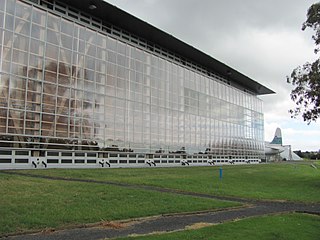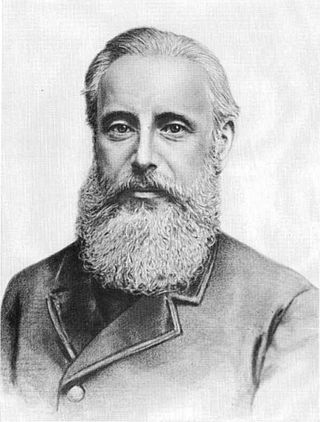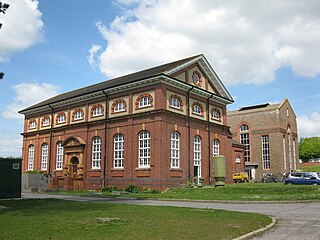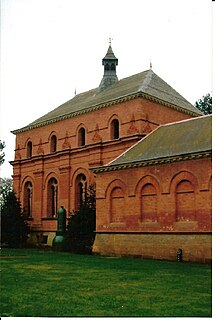
The River Brede is an English river in East Sussex. It flows into the Rock Channel and then onto the River Rother at Rye, Sussex. It takes its name from the village of Brede, which lies between Hastings and Tenterden.
Steam power developed slowly over a period of several hundred years, progressing through expensive and fairly limited devices in the early 17th century, to useful pumps for mining in 1700, and then to Watt's improved steam engine designs in the late 18th century. It is these later designs, introduced just when the need for practical power was growing due to the Industrial Revolution, that truly made steam power commonplace.

The Museum of Transport and Technology (MOTAT) is a science and technology museum located in Western Springs, Auckland, New Zealand. It is located close to the Western Springs Stadium, Auckland Zoo and the Western Springs Park. The museum has large collections of civilian and military aircraft and other land transport vehicles. An ongoing programme is in place to restore and conserve items in the collections. This work is largely managed by volunteers but, since the passing of the Museum of Transport and Technology Act in 2000, has been supported by full-time professional museum. New public programmes and facilities now promote the collections.

Henry Rossiter Worthington was an American mechanical engineer, inventor, industrialist and founder of the American Society of Mechanical Engineers in 1880.

Brede is a village and civil parish in the Rother district of East Sussex, England. It is located eight miles (13 km) north of Hastings and four miles (6 km) west of Rye.

Blagdon Lake lies in a valley at the northern edge of the Mendip Hills, close to the village of Blagdon and approximately 10 miles (16 km) south of Bristol, England. The lake was created by Bristol Water, when it dammed the River Yeo, starting construction in 1898, to designs by Charles Hawksley, and completing this in 1905. The Wrington Vale Light Railway was constructed primarily to bring building materials for the lake.

The Kempton Park steam engines are two large triple-expansion steam engines, dating from 1926–1929, at the Kempton Park Waterworks in south-west London. They were ordered by the Metropolitan Water Board and manufactured by Worthington-Simpson in Newark-On-Trent.

London Museum of Water & Steam is an independent museum founded in 1975 as the Kew Bridge Steam Museum. It was rebranded in early 2014 following a major investment project.

Papplewick Pumping Station, situated in open agricultural land approximately 3 miles (4.8 km) by road from the Nottinghamshire village of Papplewick, was built by Nottingham Corporation Water Department between 1881 and 1884 to pump water from the Bunter sandstone to provide drinking water to the City of Nottingham, in England. Two beam engines, supplied with steam by six Lancashire boilers, were housed in Gothic Revival buildings. Apart from changes to the boiler grates, the equipment remained in its original form until the station was decommissioned in 1969, when it was replaced by four submersible electric pumps.

Mount Crosby pumping station is a heritage-listed pumping station and weir at Stumers Road, Mount Crosby, City of Brisbane, Queensland, Australia. It is located on the Brisbane River and extends into Chuwar on the other side of the river. The facility supplies water to Brisbane and nearby cities and towns within the SEQ Water Grid. It was originally designed by Charles H McLay and built from 1891 to 1892. The historic parts of the facility were added to the Queensland Heritage Register on 25 October 2019. It is also listed on the Brisbane Heritage Register, together with numerous associated facilities which were not included in the state heritage listing.

Walka Water Works is a heritage-listed 19th-century pumping station at 55 Scobies Lane, Oakhampton Heights, City of Maitland, New South Wales, Australia. Originally built in 1887 to supply water to Newcastle and the lower Hunter Valley, it has since been restored and preserved and is part of Maitland City Council's Walka Recreation and Wildlife Reserve. It was added to the New South Wales State Heritage Register on 2 April 1999.
Hayle Power Station was a coal-fired power station situated at the mouth of the River Hayle, at Hayle in Cornwall, South West England.

The British Engineerium is an engineering and steam power museum in Hove, East Sussex. It is housed in the Goldstone Pumping Station, a set of High Victorian Gothic buildings started in 1866. The Goldstone Pumping Station supplied water to the local area for more than a century before it was converted to its present use. The site has been closed to the public since 2006, and in March 2018 the entire complex was put up for sale.

Worthington-Simpson was a British pump manufacturer. Many of their pumps were used in municipal waterworks in Great Britain.

The Hampton Kempton Waterworks Railway is a 2 ft gauge narrow gauge steam railway that opened in 2013, giving rides to paying visitors on a restored steam locomotive, with two back-up diesel locomotives. It is based on the site of an industrial railway that served Kempton Waterworks.

Burdekin River Pumping Station is a heritage-listed pumping station at Weir Road, Breddan, Charters Towers Region, Queensland, Australia. It was built from c. 1887 to 1910s. It is also known as Charters Towers Water Supply Scheme. It was added to the Queensland Heritage Register on 3 July 1995.
Southampton Power Station was a coal fired power station built by Southampton corporation that operated between 1904 and 1977.

The Hamilton Waterworks, also known as the Hamilton Waterworks Pumping Station, is a National Historic Site of Canada located in Hamilton, Ontario. It is an industrial water works structure built in the Victorian style, and a rare example of such a structure in Canada to be "architecturally and functionally largely intact". It is currently used to house the Museum of Steam and Technology.

Goulburn Pumping Station is a heritage-listed former municipal water supply system and now museum at Wollondilly River, Goulburn, Goulburn Mulwaree Council, New South Wales, Australia. It was built from 1885 to 1886. It includes the historic Appleby Steam Engine, which is contained in the pumping station.

Twyford Waterworks is a preserved pumping station and waterworks situated close to the village of Twyford and the city of Winchester in Hampshire, England. It is a scheduled monument and now operates as a museum. The site is leased by the Twyford Waterworks Trust and is open on selected days during the year.






















